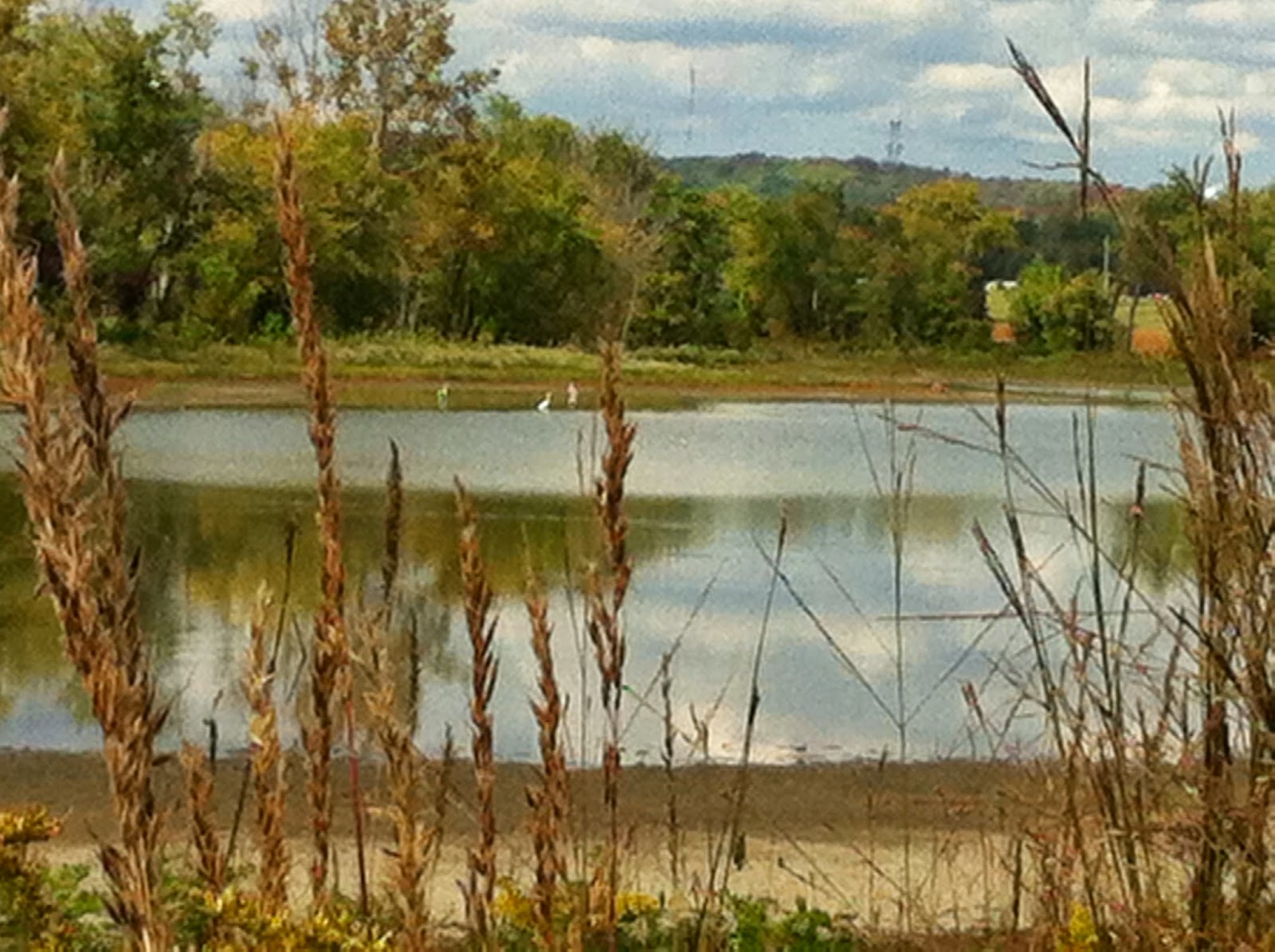The class is held on three consecutive Sundays. We gather in a class room for lectures taught by Jay Stenger and Jack Stenger (father and son team) lasting about three hours, then caravan to a local birding "hot spot" to practice field observations. Our first field trip was to the Oxbow. I've been out there before and every visit amazing me. Here is some information from the Oxbow, Inc. website:
In the central Ohio Valley, the most important remaining wetland is a 2500-acre spread of level river bottom farmland on the shore of the Ohio River, know as the Oxbow. The Oxbow is a broad floodplain where the Great Miami River empties into the Ohio. This area where three states - Ohio, Indiana, and Kentucky - come together, is near Lawrenceburg, Indiana, seventeen miles downstream from Cincinnati. It is named for a small horseshoe, or oxbow-shaped lake, formed when flood waters cut a new course for the Great Miami River, isolating a meander in the old stream bed. There is not a building on it. Almost every year it is flooded with shallow waters that deposit nutrients from upstream. This annual enrichment, plus a water table close the surface, makes the Oxbow area a highly productive land for farming.
This traditional agricultural use is vitally important to migrating birds. In the spring and fall thousands of ducks, geese, and shorebirds funnel into this rich feeding and nesting area. Grain dropped by corn pickers and combines provides much of the food for visiting waterfowl. The Oxbow is a heavily-used staging area where migrating birds refuel and rebuild their energies. The area is essential to their success on long flights between distant northern breeding grounds and southern wintering areas. Without the Oxbow these migrants might reach their northern nesting areas without the reserve strength essential to raising new broods of healthy young birds.
This is why the Oxbow is the most important wetland area in the mid-section of the Ohio Valley, drawing the tri-state area's largest concentrations of ducks and herons. Birders have listed 287 species of birds on this area, among them ducks, geese, shorebirds, raptors, and songbirds.
This is a picture I took at one of the ponds that make up The Oxbow. Among the birds I saw were Great Egrets (seen in this picture), Great Blue Herons, Double-crested Cormorants, an Osprey, some tree swallows, lots of Killdeer, and of course, the always present, soaring high above, Turkey Vultures.

No comments:
Post a Comment